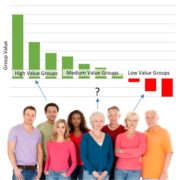Trust in Me ~ now three years in
Mark Hollyoake shares insights from his doctorate on trust within B2B
What do we really know about trust? It may be the subject of numerous books and conference papers, bandied about on social media, yet it’s clear that few of us understand why it’s an essential rather than desirable to good customer management.
Two years ago, I embarked upon a Doctorate (DBA) at Southampton University. I wanted to know what exactly trust is, whether organisations can develop it, and if so, how, and what quantifiable gains it brings them. Over the last couple of years, I’ve been sharing my insights through blogs and articles.
My promise in a very early blog was……..
“Our understanding about the way trust works is changing all the time. Over coming months, I’m going to share the latest thinking from the Doctorate which, I hope, can shed light on why trust is not just desirable, in B2B but imperative.”
I am now into my third year of the doctorate, researching B2B trust in a relational context. During this time, I have reviewed hundreds of academic works on B2B trust for insight development. That’s a lot of reading!!! This reading has exposed a gap in current research knowledge on ways trust is applied in B2B. My aim is to address this gap.
So……..what have I found out?
Trust within a B2B context has a paucity of academic research and is often poorly defined. Generalised definitions of trust are more established and recognised, with the two most common being;
| Authors | Definitions |
| Mayer, Davis & Schoorman (1995, p712) | The willingness of a party to be vulnerable to the actions of another party based on the expectation that the other will perform a particular action important to the trustor, irrespective of the ability to monitor or control the other party. |
| Rousseau et al (1998) | Trust is the willingness to be vulnerable based upon positive expectations about another’s intentions or behaviours. |
However, these definitions fall short when dealing with the complexity of B2B relationships related to the length (time) and mutuality of the relationships. A definition has been developed that addresses these shortfalls, which remain conceptual art the stage:
‘The willingness to be vulnerable to another party and the decision to engage in actions based upon an understanding of their ability, credibility and the expectations of mutual value exchange over time.’
This definition has been developed into a practical and applicable form. You can apply it to your relationships to measure how they match up against the definition and where you could focus to address any gaps.
The research to date broadly supports the initial premise of trust operating on a horizontal axis – how trust develops over time within a relationship. It has surfaced a couple of interesting areas: one I am calling the ‘Goldilocks Zone’ and the other one the ‘Dark Zone’ – more about these in future blogs. Furthermore, the research has surfaced triggers, both hard and soft, that enable an organisation to gain a ‘Goldilocks Zone’ position and hold on to it. It has also identified how to avoid the ‘Dark Zone’.
Currell & Inkpen (2002) discuss trust operating within a relationship at an inter-organisational, inter-team and inter-personal level, against a vertical axis. It is evident from the research that trust is a different construct at inter-organisational level than at the inter-personal. At organisational level it is operating as an action / behaviour conceptualisation. An organisation has the potential to develop trust through its past, current and future intentions, the reality of those intentions and the effect that had and could have.
To be honest there’s a load more, however will save it for another blog.
So What!
The definition of trust within B2B provides a framework to sense check and develop a customer relationship.
The insights into how trust operates on a horizontal and vertical axis provide a platform for the pro-active development and maintaining trust.
- Excessive Trust – When Trust Goes Wrong - October 29, 2024
- Identification Based Trust - October 21, 2024
- Introducing Knowledge Based Trust - October 15, 2024



